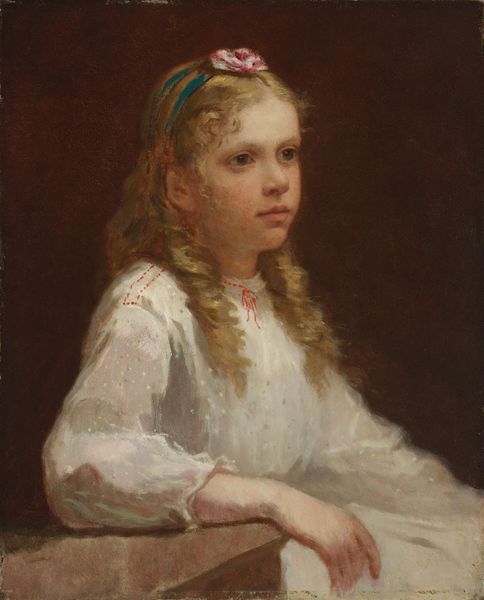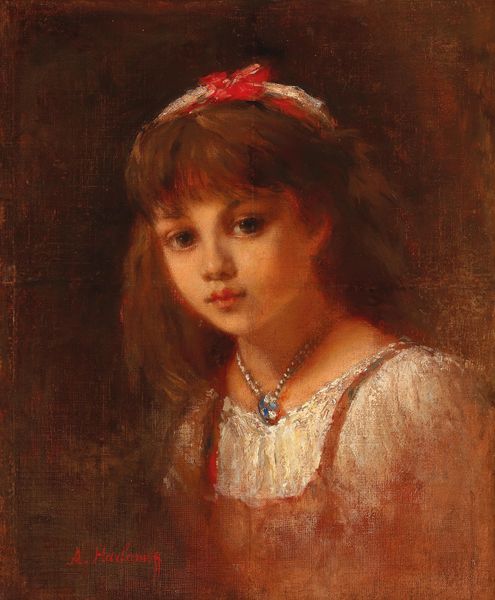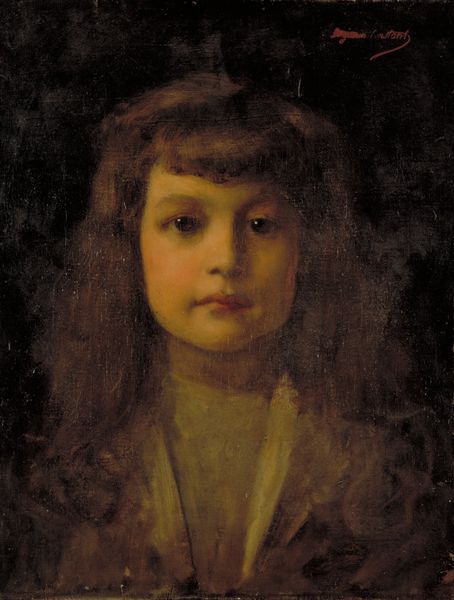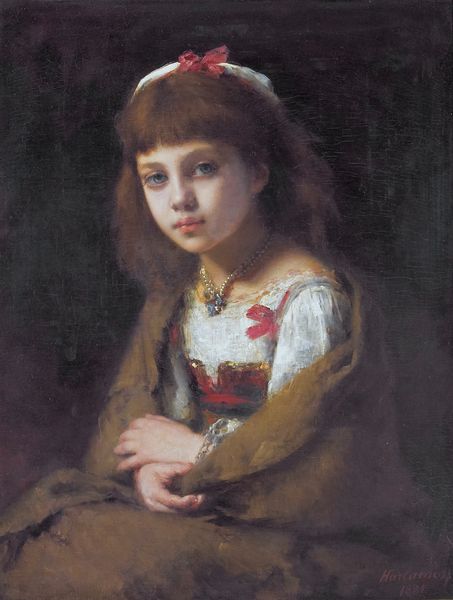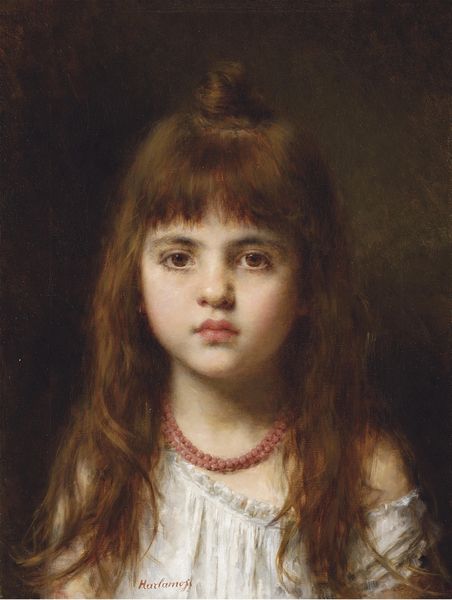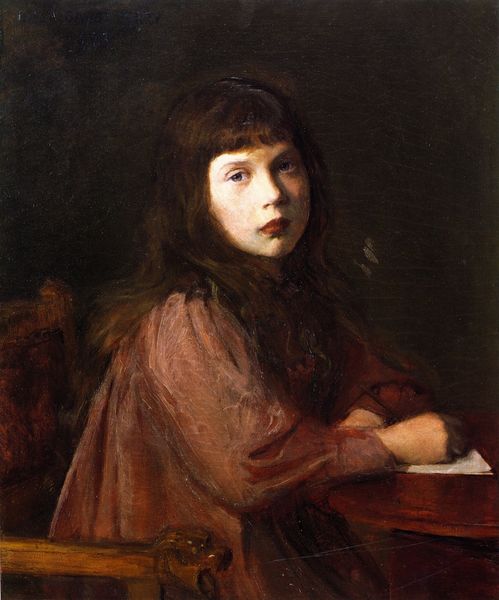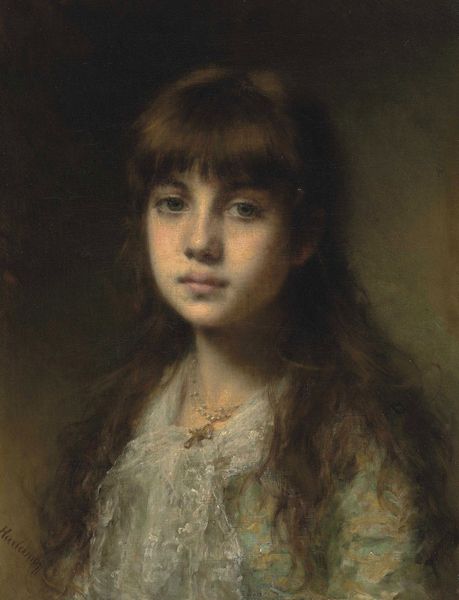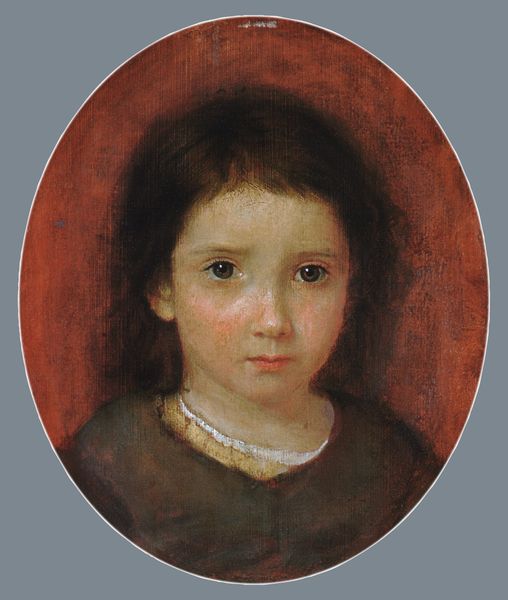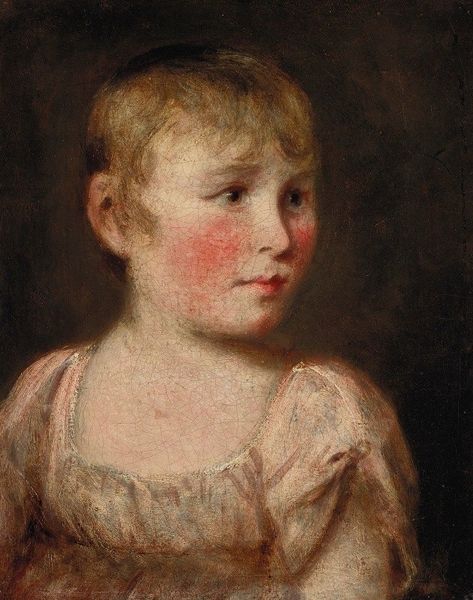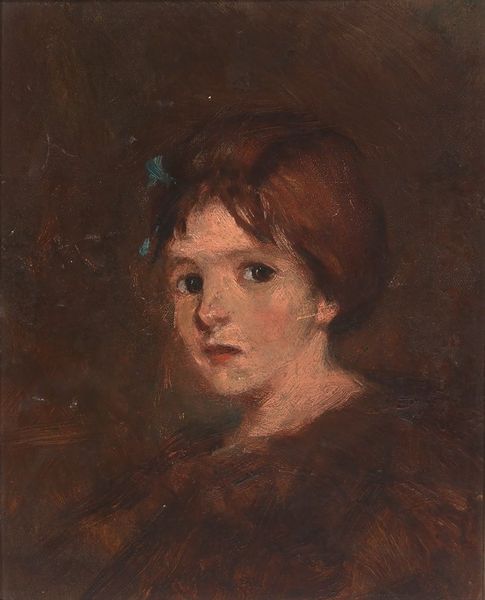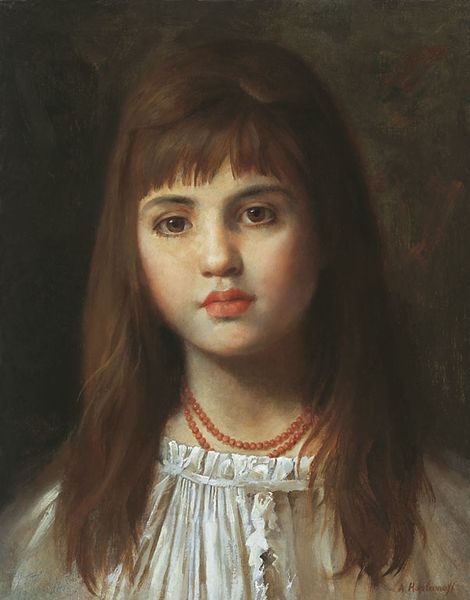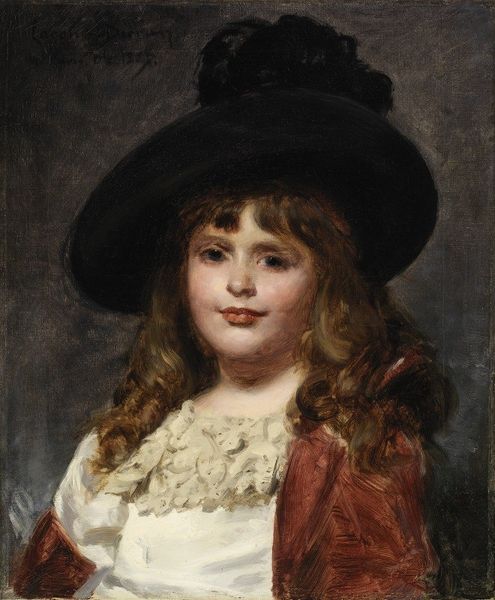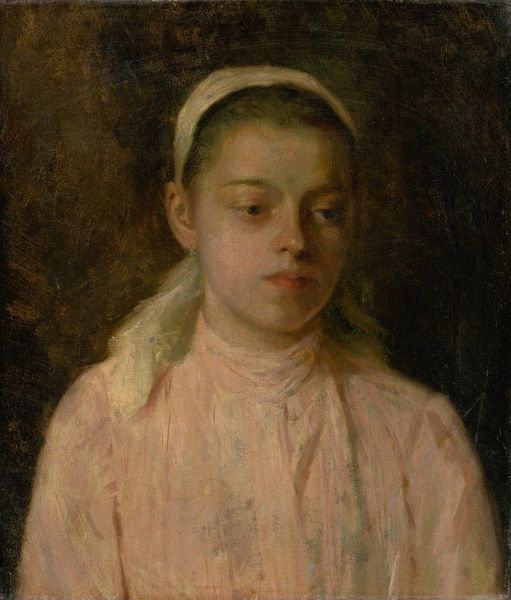
Dimensions: overall: 68.5 x 55.8 cm (26 15/16 x 21 15/16 in.) framed: 91.4 x 78.7 x 7.6 cm (36 x 31 x 3 in.)
Copyright: National Gallery of Art: CC0 1.0
Curator: Isn’t this a remarkable painting? It's George Fuller's "Violet," rendered in oil paint back in 1882. I'm struck by her enigmatic gaze. Editor: She feels like she's caught between two worlds, gazing directly out at us, demanding recognition. The dark backdrop almost swallows her, emphasizing her otherness, perhaps a metaphor for the constricted roles assigned to young girls in the late 19th century. Curator: That contrast is arresting! For me, there’s a dreaminess here, heightened by the almost blurred edges. The romanticism practically radiates. I keep wondering, what was she thinking as she posed? Did she even pose? I imagine a quick stolen moment… Editor: Possibly. And maybe the blurred effect speaks to something else, a sort of intentional obscuring. Who was this child, beyond her physical beauty? We only have a name – Violet – a fleeting identity attached to this image, like the romantic attachment to idealised female beauty which has so permeated and affected women and their identities since. Curator: The way Fuller captures light feels so deliberate, doesn’t it? It’s like she's illuminated from within, radiating some personal story. Though what story? I imagine… rebellion, quiet, contained. Editor: Rebellion is interesting here. The portrait conforms to conventions of the time in some ways—idealized beauty, passive subject. Is her quiet strength rebellion enough, when it operates within very strict and unsaid guidelines? Maybe Fuller invites us to challenge those conventions ourselves by allowing the sitter her own subjectivity beyond those limitations, hence the look. Curator: I agree. Perhaps it’s in the subtleties: the shadow on her face, the depth in those pale eyes… her slightly parted lips like she is on the verge of confiding some incredible secret. Editor: Right. Even the very act of naming her, calling her “Violet” positions her within a tradition, from Shakespeare’s Viola, another iteration of the same name from whom their worlds of gender and identity intertwine, all echoing these ongoing complexities around who she is, then and now. Curator: Well, for me, Fuller captured her in that in-between space: not just girl, not yet woman… But, for you, "Violet" stands in commentary to a culture. It speaks of that, for certain, but it remains with an echo of pure magic, if you will forgive my sentiment. Editor: Absolutely. We see our own meanings, our own selves, reflected in these works. Thanks to Fuller’s portrait, we might reflect on it for longer than before.
Comments
No comments
Be the first to comment and join the conversation on the ultimate creative platform.
